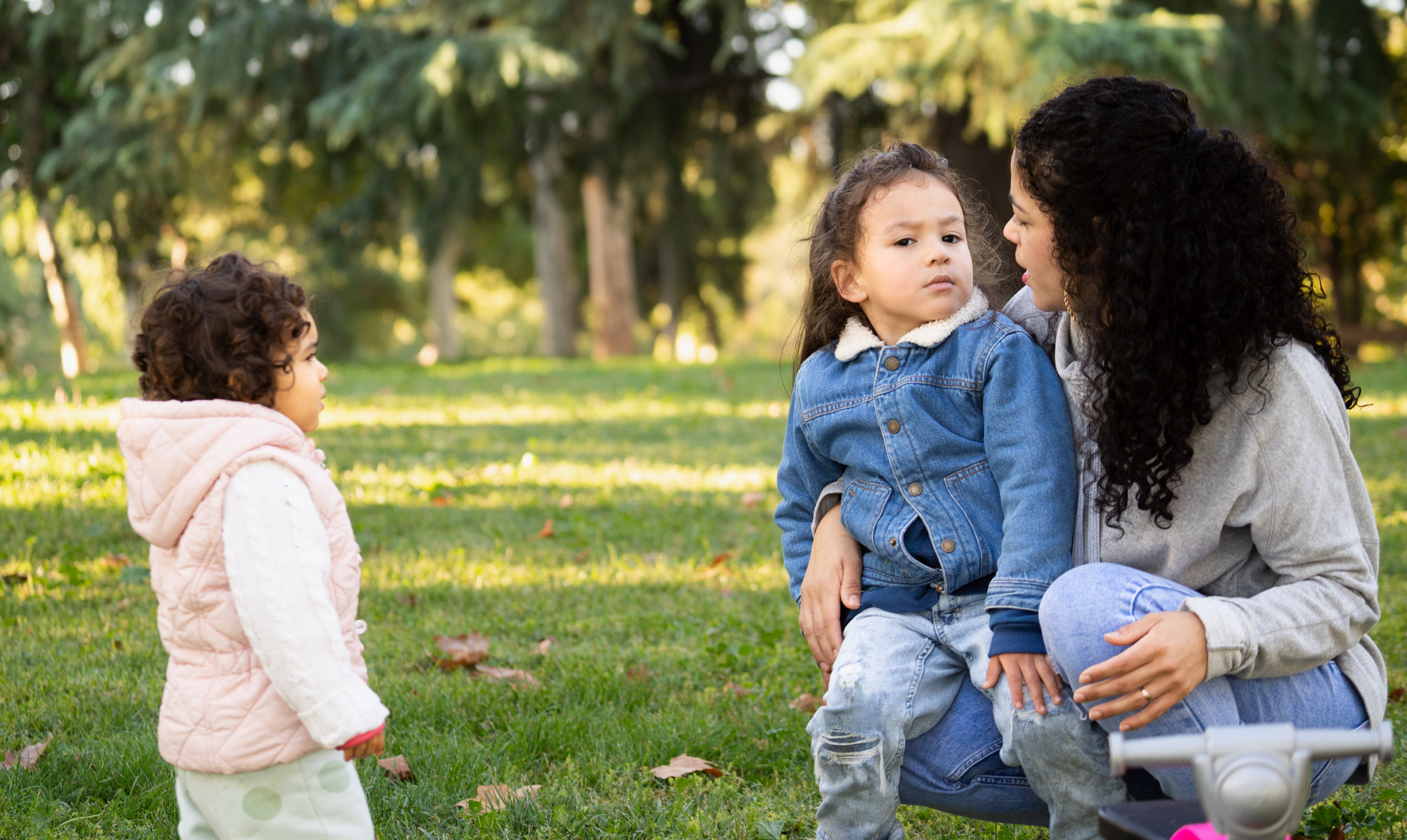
When your child is hit by another, it can feel like time slows down. Do you go to your child first? Say something to the other kid? Look for the parent?
Certified parenting coach Anuradha Gupta told Newsweek that it is one of those “awkward, hard-to-navigate moments”—and one that she has experienced herself.
In a carousel post on Instagram, 34-year-old Gupta (@mommyandmishti) laid out a clear, four-step response for parents. Her first rule: go to your child.
Gupta told Newsweek about a moment when her daughter was hit by another toddler at the park while the other child’s parent wasn’t looking.
“I felt an adrenaline rush, but I knew I had to stay grounded,” Gupta said. “I stepped in right away, gently moved my daughter away, and focused on her first.
“I got down to her eye level and said, ‘That wasn’t OK. I saw that. I’m right here.’ She was stunned, and my job was to make her feel safe.”
That leads to step two: hold the boundary—even if the other child isn’t yours.
“I turned to the other child, kindly but clearly, and said, ‘We don’t hit. Hitting hurts. If you want to play with her, you can say something, like, can I play?’ I wasn’t trying to scold him, just offer guidance. Had his parent seen it, I’m sure she would’ve stepped in.”
Still, many parents feel uncomfortable speaking up. Gupta suggested redirecting attention to your own child or using inclusive, non-blaming language such as, “Let’s use gentle hands.”
“Looks like both of you wanted that toy—let’s take turns.”
“Come here, love. I saw that. I’m right here.”
Step three is to give your child the words. Gupta said that most toddlers don’t know what to say when something like this happens.
“Sometimes, I’ll also gently say to the parent, ‘Just letting you know, he hit her a moment ago. She’s OK, but I stepped in so she felt supported.’ Most parents really appreciate it when it’s said with compassion, not criticism,” Gupta said.
Victor Canales
As the old saying goes, practice makes perfect. When your toddler is calm and you are in a safe environment, such as the home, Gupta said you should try the fourth step: role-play.
“These everyday situations are actually big teaching opportunities,” she added. “When my daughter got hit, of course I comforted her first. But I also wanted to give her something she could carry into the next moment, something to do if it ever happened again.
“So, I said things like, ‘You can say stop’ or ‘No.’ You can hold your hand out. You can walk away and tell a grown-up.”
These steps aren’t just about stopping one hit; they are lifelong lessons. “Learning how to speak up, hold a boundary [and] stay calm,” Gupta said.
“These are skills that will support her not just in toddlerhood, but in friendships, school, adult relationships and beyond.”
